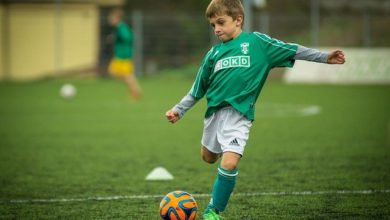I love walking north, reaching the poles!

I love walking north, reaching the poles!
When the first brave ones went out to the parks for a walk with sticks in their hands, passersby raised their eyebrows in astonishment or smiled scornfully upon seeing them. Today, surprisingly few people practice Nordic walking, because the sport is gaining more and more fanatical fans.
Nordic walking was born in the 1920s in Finland as a summer training for cross-country skiers. Pro-health exercises gained pro-health status for the masses only in 1997, when the shaft manufacturer, in collaboration with athletes and sports medicine specialists, created a new system of ligaments that secured the cane to the hand. Thanks to this, the technology of this sport has evolved into its current form. Its rapidly growing popularity in the United States and Europe is due to the fact that it is a safe, fun and accessible sport. Similar to cross-country skiing, it is considered one of the most effective sports in burning calories and improving the efficiency of the body (the efficiency of the circulatory system and the respiratory system), and at the same time it is safe for the joints.
Nordic walking can be practiced all year round, in any climate, in any weather and on any terrain. Those who like to train walking should have sticks in their hands. Walking with them has many advantages that, with regular training, guarantee a fit body, good shape and good health.
Advantages of Nordic Walking compared to Nordic Walking:
- 10-15% faster heart rate
- 20-46% higher calories burned (up to 450 kcal/hr, walking 280 kcal/hr)
- It involves 90% of the muscles of the whole body. 70% of muscles work when walking.
- During Nordic walking, the muscles of the back, abdomen, shoulders and forearms work additionally
- More effective in relaxing the neck and shoulder muscles
- Relief of leg joints – hips, knees and ankles
The advantages of Nordic walking previously mentioned include improved coordination, a sense of balance and a fuller appearance (straight back, flat stomach).
However, in order to enjoy all the benefits of playing this sport, you have to learn the correct technique of walking with canes. Not without reason specialists call pole hiking “four-wheel drive”, because poles are not just props, but tools to use, so push them away! But let’s start from the beginning. The movement of the feet during Nordic walking is the same as during walking. It is very important that you start each step with your heels on the floor. Then there should be a phase of rolling the foot and pushing the forefoot. The arms should work opposite the legs, that is, when moving the right leg forward, the left arm is extended forward. The tip of the stick touches the ground at about the same time as the heel of the other leg. At this stage, the stick should not be vertical, but inclined – the handle moves forward and the tip, that is, the foot, is retracted. This stick arrangement allows it to be loaded instantly and pushed away when the opposite foot separates from the ground. Manual work is very important in correct Nordic walking technique. When holding the stick forward, adjust and push it apart, grab it with a comfortable, firm grip. In the final stage of take-off, you have to open your hand as if you want to release the stick. However, the structure of the strap mentioned at the beginning allows you to keep the handle of the stick in your hand. During the march, the pelvis and shoulder should act in reverse phase – a step with the right leg causes the right hip to move forward, and a simultaneous extension movement of the left arm should lead to the forward movement of the left shoulder. This body work ensures that the core muscles are included in the training. During the march, the pelvis and shoulder should act in reverse phase – a step with the right leg causes the right hip to move forward, and a simultaneous extension movement of the left arm should lead to the forward movement of the left shoulder. This body work ensures that the core muscles are included in the training. During the march, the pelvis and shoulder should act in reverse phase – a step with the right leg causes the right hip to move forward, and a simultaneous extension movement of the left arm should lead to the forward movement of the left shoulder. This body work ensures that the core muscles are included in the training.
The most common mistakes in the Nordic Walking technique:
1. Poor work of the hips and shoulders, and therefore the lack of momentum with the sticks.
2. Work with poles too far from the sides of the body.
3. Constant pressure on the hands. There is no hand opening phase, thus preventing blood from reaching the hands.
4. The lack of a strong grip on the stick when pushed back.
5. Move the right leg and right arm at the same time, as well as the left leg and left arm simultaneously.
Mastering the basic technique of Nordic Walking opens up the possibility to modify and enrich training with jogging, sprinting and jumping – all with synchronized thrust with the sticks. Advanced and inline skaters should definitely try roller skating!
How to choose the poles
The rule is simple: if the correct grip of the stick and the rest of the stick on the floor bend the elbow at a right angle, then the length of the stick is correct. You can also use the formula:
length of poles = height in centimeters x 0.68.
When buying Nordic walking poles, you need to make sure that they are truly purpose-built poles, that they have a proper strap, very different from ski and trekking poles, and replaceable beveled feet. It is worth investing (but not necessary) in the lightest carbon fiber poles. After all, Nordic walking is not a strong sport and you only need to push the poles away and not carry them.



